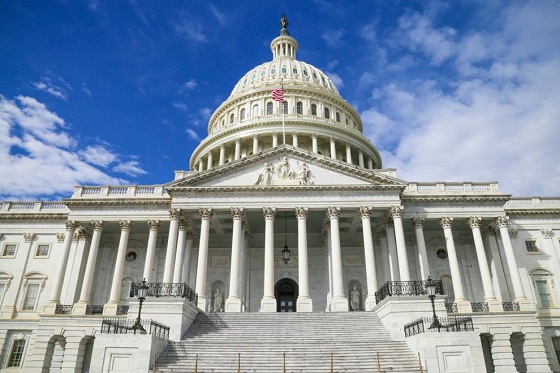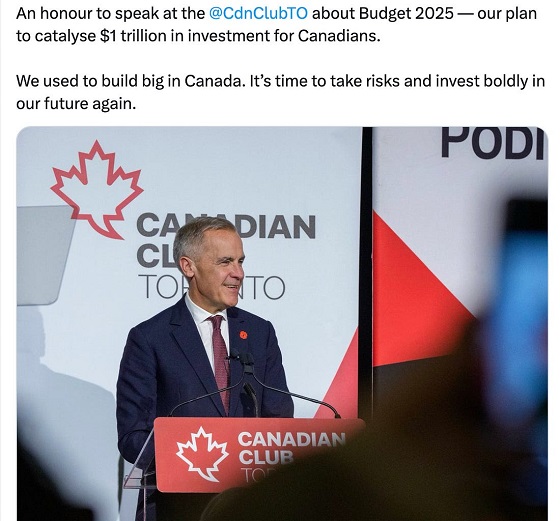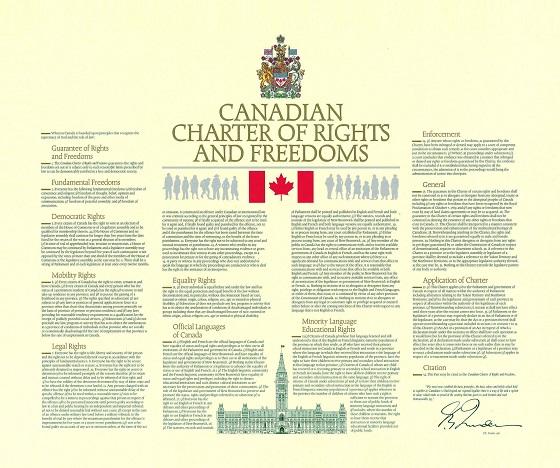Brownstone Institute
Congress’ Shield against Trump’s Hammer of Justice

From the Brownstone Institute
Somewhere amid the 1,500+ pages of legislative clutter in the latest Continuing Resolution—the bill apparently killed by public exposure alone—lies a provision so audacious, so shameless, I can only assume it was drafted by a cabal of Congressional career criminals. Section 605—a sterile title masking its true intent—amounts to nothing less than a legislative fortress erected to shield Congress from the Justice Department, the FBI, and, most troubling of all, accountability.
At a time when President-elect Trump’s administration prepares to restore integrity and justice, Congress appears to have donned its armor, hiding its secrets behind a wall of bureaucratic legalese. This provision, if left unchallenged, sets a dangerous precedent: members of Congress placing themselves above the law, protected from scrutiny by the very agencies tasked with upholding justice.
Section 605: The House above the Law
Let’s strip away the camouflage. Section 605 does three things with surgical precision:
First, it declares that Congress retains perpetual possession of all “House Data”—a broad, almost limitless category including emails, metadata, and any electronic communication touching official House systems. This means providers like Google or Microsoft, who store or process this data, are mere bystanders, unable to act as custodians for investigators. The House claims total dominion.
Second, courts are ordered to “quash or modify” subpoenas for House Data. Investigators from Trump’s Justice Department, no matter how compelling the evidence, will now face a procedural minefield laid by Congress itself. Compliance with the legal process will be, in essence, denied.
Third—and most chilling—this protection applies retroactively. Any ongoing investigation that hasn’t yet secured House data is now dead on arrival. Existing subpoenas? Nullified. Pending warrants? Quashed. Section 605 doesn’t just safeguard future misconduct; it effectively buries the past.
The Investigations behind the Curtain
This isn’t a hypothetical problem. There are two glaring examples of why Congress is so eager to cement its immunity.
First, let’s talk about Shifty Schiff and Eric Swalwell. For at least three years, the DOJ has been investigating these two California Democrats—Schiff, now a senator, and Swalwell, perpetually ensconced in mediocrity—over illegally leaking classified documents to the media. A courageous Congressional staffer blew the whistle, revealing that both men had routinely fed classified information to friendly reporters to score cheap political points. The Grand Jury concluded that these leaks broke the law, yet the investigation’s smoking gun lies in House communications.
Under Section 605, that investigation would be dead. The DOJ and FBI would find their subpoenas quashed and their warrants denied. Schiff and Swalwell, guilty of weaponizing national security secrets, would escape justice—retroactively.
Second, there’s the case of Liz Cheney—a name that now evokes memories of hubris and betrayal among Republicans. During her star turn on the January 6th Committee, Cheney engaged in witness tampering to shape Cassidy Hutchinson’s testimony. By all accounts, Cheney pressured Hutchinson to craft a narrative favorable to the Committee’s political objectives, a flagrant abuse of power that would warrant criminal investigation.
But with Section 605 in place, the DOJ’s efforts to uncover the truth would be paralyzed. Cheney’s communications—the very evidence needed to prove witness tampering—would be walled off. Congress would simply claim that its data is untouchable, its members above reproach.
Historical Parallels: A Republic’s Betrayal
The Romans had a term for this sort of legislative cunning: privilegium—a law that benefits a select few at the expense of justice. Cicero, in his fight against corrupt senators, warned that “the closer a man clings to power, the more strenuously he seeks to avoid the law.” Section 605 is the embodiment of Cicero’s warning. It allows the very lawmakers tasked with overseeing government to shroud themselves in secrecy, impervious to scrutiny from Trump’s incoming Justice Department.
This is not the first time Congress has played such games. During the Watergate era, Richard Nixon famously claimed that “when the president does it, that means it is not illegal.” Nixon’s arrogance, of course, led to his downfall. But now, it appears Congress has adopted the same mantra: when members of Congress write the law, they are beyond its reach.
Undermining Justice in the Age of Trump
Make no mistake: Section 605 is an act of preemptive lawfare. Trump’s Justice Department will soon be tasked with untangling years of corruption, leaks, and abuse of power that have flourished in Washington. The DOJ and FBI, freed from the shackles of political interference, are primed to restore the rule of law.
Yet Congress, fearing exposure, has pulled up the drawbridge. Section 605 would ensure that leakers like Schiff and Swalwell remain untouchable. It would protect Cheney from accountability for witness tampering. It would obstruct investigations, shield misconduct, and shatter public trust.
This is not about protecting Congress from political harassment. It’s about protecting Congress from justice.
The Rule of Law or the Rule of Congress?
The Framers never intended Congress to be a castle immune from oversight. The very idea that lawmakers can exempt themselves from the justice system would have been anathema to Jefferson and Madison, who understood that accountability is the lifeblood of a republic. When one branch of government declares itself untouchable, the balance of power collapses.
Section 605 cannot stand. It must be challenged, overturned, and consigned to the legislative ash heap. For if Congress succeeds in placing itself above the law, then the rule of law itself will become nothing more than a hollow promise.
As President-elect Trump prepares to take office, let this be a rallying cry: the swamp cannot be allowed to protect its own. If justice is to prevail, no one—not Schiff, not Swalwell, not Cheney—can be above the law.
And that includes Congress.
Brownstone Institute
Bizarre Decisions about Nicotine Pouches Lead to the Wrong Products on Shelves

From the Brownstone Institute
A walk through a dozen convenience stores in Montgomery County, Pennsylvania, says a lot about how US nicotine policy actually works. Only about one in eight nicotine-pouch products for sale is legal. The rest are unauthorized—but they’re not all the same. Some are brightly branded, with uncertain ingredients, not approved by any Western regulator, and clearly aimed at impulse buyers. Others—like Sweden’s NOAT—are the opposite: muted, well-made, adult-oriented, and already approved for sale in Europe.
Yet in the United States, NOAT has been told to stop selling. In September 2025, the Food and Drug Administration (FDA) issued the company a warning letter for offering nicotine pouches without marketing authorization. That might make sense if the products were dangerous, but they appear to be among the safest on the market: mild flavors, low nicotine levels, and recyclable paper packaging. In Europe, regulators consider them acceptable. In America, they’re banned. The decision looks, at best, strange—and possibly arbitrary.
What the Market Shows
My October 2025 audit was straightforward. I visited twelve stores and recorded every distinct pouch product visible for sale at the counter. If the item matched one of the twenty ZYN products that the FDA authorized in January, it was counted as legal. Everything else was counted as illegal.
Two of the stores told me they had recently received FDA letters and had already removed most illegal stock. The other ten stores were still dominated by unauthorized products—more than 93 percent of what was on display. Across all twelve locations, about 12 percent of products were legal ZYN, and about 88 percent were not.
The illegal share wasn’t uniform. Many of the unauthorized products were clearly high-nicotine imports with flashy names like Loop, Velo, and Zimo. These products may be fine, but some are probably high in contaminants, and a few often with very high nicotine levels. Others were subdued, plainly meant for adult users. NOAT was a good example of that second group: simple packaging, oat-based filler, restrained flavoring, and branding that makes no effort to look “cool.” It’s the kind of product any regulator serious about harm reduction would welcome.
Enforcement Works
To the FDA’s credit, enforcement does make a difference. The two stores that received official letters quickly pulled their illegal stock. That mirrors the agency’s broader efforts this year: new import alerts to detain unauthorized tobacco products at the border (see also Import Alert 98-06), and hundreds of warning letters to retailers, importers, and distributors.
But effective enforcement can’t solve a supply problem. The list of legal nicotine-pouch products is still extremely short—only a narrow range of ZYN items. Adults who want more variety, or stores that want to meet that demand, inevitably turn to gray-market suppliers. The more limited the legal catalog, the more the illegal market thrives.
Why the NOAT Decision Appears Bizarre
The FDA’s own actions make the situation hard to explain. In January 2025, it authorized twenty ZYN products after finding that they contained far fewer harmful chemicals than cigarettes and could help adult smokers switch. That was progress. But nine months later, the FDA has approved nothing else—while sending a warning letter to NOAT, arguably the least youth-oriented pouch line in the world.
The outcome is bad for legal sellers and public health. ZYN is legal; a handful of clearly risky, high-nicotine imports continue to circulate; and a mild, adult-market brand that meets European safety and labeling rules is banned. Officially, NOAT’s problem is procedural—it lacks a marketing order. But in practical terms, the FDA is punishing the very design choices it claims to value: simplicity, low appeal to minors, and clean ingredients.
This approach also ignores the differences in actual risk. Studies consistently show that nicotine pouches have far fewer toxins than cigarettes and far less variability than many vapes. The biggest pouch concerns are uneven nicotine levels and occasional traces of tobacco-specific nitrosamines, depending on manufacturing quality. The serious contamination issues—heavy metals and inconsistent dosage—belong mostly to disposable vapes, particularly the flood of unregulated imports from China. Treating all “unauthorized” products as equally bad blurs those distinctions and undermines proportional enforcement.
A Better Balance: Enforce Upstream, Widen the Legal Path
My small Montgomery County survey suggests a simple formula for improvement.
First, keep enforcement targeted and focused on suppliers, not just clerks. Warning letters clearly change behavior at the store level, but the biggest impact will come from auditing distributors and importers, and stopping bad shipments before they reach retail shelves.
Second, make compliance easy. A single-page list of authorized nicotine-pouch products—currently the twenty approved ZYN items—should be posted in every store and attached to distributor invoices. Point-of-sale systems can block barcodes for anything not on the list, and retailers could affirm, once a year, that they stock only approved items.
Third, widen the legal lane. The FDA launched a pilot program in September 2025 to speed review of new pouch applications. That program should spell out exactly what evidence is needed—chemical data, toxicology, nicotine release rates, and behavioral studies—and make timely decisions. If products like NOAT meet those standards, they should be authorized quickly. Legal competition among adult-oriented brands will crowd out the sketchy imports far faster than enforcement alone.
The Bottom Line
Enforcement matters, and the data show it works—where it happens. But the legal market is too narrow to protect consumers or encourage innovation. The current regime leaves a few ZYN products as lonely legal islands in a sea of gray-market pouches that range from sensible to reckless.
The FDA’s treatment of NOAT stands out as a case study in inconsistency: a quiet, adult-focused brand approved in Europe yet effectively banned in the US, while flashier and riskier options continue to slip through. That’s not a public-health victory; it’s a missed opportunity.
If the goal is to help adult smokers move to lower-risk products while keeping youth use low, the path forward is clear: enforce smartly, make compliance easy, and give good products a fair shot. Right now, we’re doing the first part well—but failing at the second and third. It’s time to fix that.
Addictions
The War on Commonsense Nicotine Regulation

From the Brownstone Institute
Cigarettes kill nearly half a million Americans each year. Everyone knows it, including the Food and Drug Administration. Yet while the most lethal nicotine product remains on sale in every gas station, the FDA continues to block or delay far safer alternatives.
Nicotine pouches—small, smokeless packets tucked under the lip—deliver nicotine without burning tobacco. They eliminate the tar, carbon monoxide, and carcinogens that make cigarettes so deadly. The logic of harm reduction couldn’t be clearer: if smokers can get nicotine without smoke, millions of lives could be saved.
Sweden has already proven the point. Through widespread use of snus and nicotine pouches, the country has cut daily smoking to about 5 percent, the lowest rate in Europe. Lung-cancer deaths are less than half the continental average. This “Swedish Experience” shows that when adults are given safer options, they switch voluntarily—no prohibition required.
In the United States, however, the FDA’s tobacco division has turned this logic on its head. Since Congress gave it sweeping authority in 2009, the agency has demanded that every new product undergo a Premarket Tobacco Product Application, or PMTA, proving it is “appropriate for the protection of public health.” That sounds reasonable until you see how the process works.
Manufacturers must spend millions on speculative modeling about how their products might affect every segment of society—smokers, nonsmokers, youth, and future generations—before they can even reach the market. Unsurprisingly, almost all PMTAs have been denied or shelved. Reduced-risk products sit in limbo while Marlboros and Newports remain untouched.
Only this January did the agency relent slightly, authorizing 20 ZYN nicotine-pouch products made by Swedish Match, now owned by Philip Morris. The FDA admitted the obvious: “The data show that these specific products are appropriate for the protection of public health.” The toxic-chemical levels were far lower than in cigarettes, and adult smokers were more likely to switch than teens were to start.
The decision should have been a turning point. Instead, it exposed the double standard. Other pouch makers—especially smaller firms from Sweden and the US, such as NOAT—remain locked out of the legal market even when their products meet the same technical standards.
The FDA’s inaction has created a black market dominated by unregulated imports, many from China. According to my own research, roughly 85 percent of pouches now sold in convenience stores are technically illegal.
The agency claims that this heavy-handed approach protects kids. But youth pouch use in the US remains very low—about 1.5 percent of high-school students according to the latest National Youth Tobacco Survey—while nearly 30 million American adults still smoke. Denying safer products to millions of addicted adults because a tiny fraction of teens might experiment is the opposite of public-health logic.
There’s a better path. The FDA should base its decisions on science, not fear. If a product dramatically reduces exposure to harmful chemicals, meets strict packaging and marketing standards, and enforces Tobacco 21 age verification, it should be allowed on the market. Population-level effects can be monitored afterward through real-world data on switching and youth use. That’s how drug and vaccine regulation already works.
Sweden’s evidence shows the results of a pragmatic approach: a near-smoke-free society achieved through consumer choice, not coercion. The FDA’s own approval of ZYN proves that such products can meet its legal standard for protecting public health. The next step is consistency—apply the same rules to everyone.
Combustion, not nicotine, is the killer. Until the FDA acts on that simple truth, it will keep protecting the cigarette industry it was supposed to regulate.
-

 Agriculture1 day ago
Agriculture1 day agoBovaer Backlash Update: Danish Farmers Get Green Light to Opt Out as UK Arla Trial Abruptly Ends!
-

 International1 day ago
International1 day agoBBC boss quits amid scandal over edited Trump footage
-

 Alberta1 day ago
Alberta1 day agoSchool defunding petition in Alberta is a warning to parents
-

 Daily Caller1 day ago
Daily Caller1 day agoMcKinsey outlook for 2025 sharply adjusts prior projections, predicting fossil fuels will dominate well after 2050
-

 Agriculture1 day ago
Agriculture1 day agoFarmers Take The Hit While Biofuel Companies Cash In
-

 Business17 hours ago
Business17 hours agoCarney’s Floor-Crossing Campaign. A Media-Staged Bid for Majority Rule That Erodes Democracy While Beijing Hovers
-

 Frontier Centre for Public Policy1 day ago
Frontier Centre for Public Policy1 day agoNotwithstanding Clause Is Democracy’s Last Line Of Defence
-

 Business1 day ago
Business1 day agoCarney government needs stronger ‘fiscal anchors’ and greater accountability












